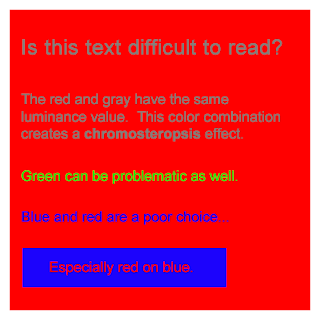Design critic Don Norman lists the following as 3 ways good design makes you happy:
- Viscerally
- Behaviorally
- Reflectively
How do these three ways make you happy? Lets look at each of these a little more closely.
Something coming from strong emotions and not from logic or reason. This is an interesting way of thinking. When someone follows their heart or listens to their innate compass as opposed to what is logically sound we refer to this as being visceral. Looking at this from the standpoint of making someone happy, it's easy to connect the dots because normally when we get what we want our way it fills us with joy. That's not to say that it's always the right choice, but it's what pleases us. So by interacting with design by using our emotions - how we feel - compared to just following orders then there's more designer influence and individuality. For example, when drawing, you draw the proportions of an object based on what you see and how big you FEEL that they should be. It's different than if you were tracing the object. There are confined limits to what you can draw, but by drawing freely the object can break those barriers and come to life, making the work unique to your skill.
When Don talks about behavior of design, it's similar in the way of visceral because it has to do with our emotions and what we expect to gain from the object. Like Isaac Newton said, "for every action there is a reaction" and the same applies to the behavior of a design. It's designed to act in a certain fashion that once something happens we expect a certain outcome to follow. This makes it simpler for us because we usually know the outcome. If something unexpected happens such handle breaking off a coffee mug that you just bought then you would be displeased because the object didn't perform to your expectation and that can be upsetting. If the object responds with the same routine outcome each time, then you know that it's well-designed.
Finally how design is reflective. I believe this has to do with us. We live in a society of "i" everything - the number one focus is ourselves. While this may be disconcerting most of the time, it's become apart of everyday life. When choosing stuff to buy, we look at how well it fits to our needs, how well we'll like it and whether or not it fills a void. In the video, Don says that we buy products simply because of how they will make us look. Whether it's a car or shoes, we care about how things reflect on us. With the example of car buying, the obvious things we look for in the decision-making process are whether or not it's safe, has good fuel-efficiency and adapts to the geographical region you're in. However, a main decision point is in the overall look of it. Why do we care about how something looks? Because we want to be cool! Why do so many people buy things that others have? So they can look cool! Apple products are a good example of this. While the products of Apple are reliable and get the job done, they're also very well-designed, but many people buy them because others have them. This illustrates how certain products act almost as our identity.


























